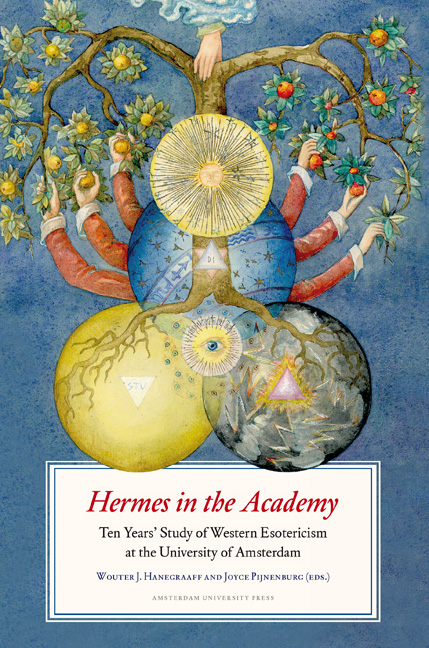On First Looking into the Halls of Hermeticism
Published online by Cambridge University Press: 20 January 2021
Summary
I entered the peristyle of the department of History of Hermetic Philosophy and Related Currents when the columns had just been erected and the paint was still wet. A new Academy had been built, and I had it almost all to myself to wander around in, read its inscriptions, and contemplate the images on the walls. It was a fascinating period in which I had to acquire the principles of a wholly new field of study, having the honor of being the first Ph.D. student ever in the History of Hermetic Philosophy.
It seems to be any scholar's dream to chart an unexplored area. At the same time, already during my studies in Art History I had noted how many historians had paid attention to schools of thought that one could define as esoteric, from Aby Warburg's eye-opening scholarship onwards. It was as if a Wahlverwandtschaft of sorts existed between art and esotericism. Which art historian does not want to become more knowledgeable about subjects such as multilayered emblems, alchemical symbols, Renaissance diagrams of the universe, collections of curiosities, and ancient books on magic? And this is only to mention the old masters – what is more, the origins of many abstract artworks, only seemingly rational, appear to lie in ideas that may be characterized as esoteric, such as Mondrian's theosophy.
When I began my studies in Art History, my interest was drawn to works of art that did not fully fit into the traditional currents of imagery and iconography, but appeared to conceal, when studied carefully, some unexpected or ambiguous meaning, pointing to ways of thought lying under the apparent surface. I also encountered the unmistakable influence of Neoplatonic thinking on works of art belonging to the Western canon, such as Michelangelo's drawings or Botticelli's “Primavera.” On the one hand, it dawned upon me that many artists, from antiquity to the present time, had been attracted to different kinds of Hermetic thinking, to ideologies that attach great value to the creative faculty of man and to the evocative power of images. On the other hand, the philosophers who shaped these esoteric traditions made eager use of elaborate imagery in order to visualize ideas that could not easily be transmitted by means of rational argument alone.
- Type
- Chapter
- Information
- Hermes in the Academy , pp. 105 - 106Publisher: Amsterdam University PressPrint publication year: 2009



